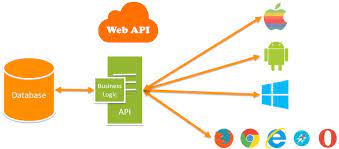In this Video, I am going to discuss ASP.NET Web API Attribute Routing with examples. As we already discussed in the ASP.NET Web API Routing Video that the Routing is a pattern matching mechanism to match an incoming HTTP Request to an action method of a controller.

Attribute Routing in ASP.NET Web API
The ASP.NET Web API 2 and ASP.NET MVC 5 supports a new type of routing called attribute routing. As the name implies, attribute routing means attributes are used to define routes. The Attribute routing provides more control over the URIs in your Web API application by defining routes directly on the actions and controllers. For example, you can easily create URIs that describes the hierarchies of resources.
The earlier style of routing called convention-based routing is still fully supported by ASP.NET Web API. In fact, you can combine both approaches in the same project. In this Video, we will discuss how to enable attribute routing in Web API and describes the various options for attribute routing.
Why do we need Web API Attribute Routing?
The first release of Web API uses the convention-based routing. In convention-based, we can define one or more route templates in the WebApiConfig file, which are basically parameterized strings. When the Web API Framework receives an HTTP request, it matches the URI against the route template that is available in the Route Table. For more information about convention-based routing, Please read the following Videos where we discussed the Convention based with examples.
One advantage of convention-based routing is that all the URI templates are defined in a single place, and the routing rules are applied consistently across all the controllers.
But the convention-based routing in ASP.NET Web API makes it hard to support certain URI patterns that are common in RESTful APIs. For example, resources often contain child resources: Customers have orders, movies have actors, books have authors, etc. Its natural to create URIs that reflects these relations:
Lets understand this with an example.
Step1: Create a new Web API application. Name it AttributeRoutingInWEBAPI
Step2: Right-click on the “Models” folder and add a class file with the name Student.cs and then copy and paste the following code.
Step3: Now, add Students Controller.
To do so Right-click on the Controllers folder and add a new Web API2 controller – Empty. Name it StudentsController.cs. Copy and paste the following code.
In Web API1, we had the convention-based routing that defines the routes using the route templates. When we create a new Web API project the Web API Framework creates a default route in the WebApiConfig.cs file. The default route is shown below

So with the above default route and the StudentsController in place /api/students is mapped to the Get() method of StudentsController as expected as shown in the below image.

But when we navigate to /api/students/1 we get the following exception message
Multiple actions were found that match the request: Get on type AttributeRoutingInWEBAPI.Controllers.StudentsController GetStudentCourses on type AttributeRoutingInWEBAPI.Controllers.StudentsController
This is because the Web API Framework does not know which of the 2 following action methods to map to the URI /api/students/1
Get(int id) or GetStudentCourses(int id)
This can be very easily achieved by using the Attribute Routing in ASP.NET Web API. Here is what we want the Web API Framework to do
- URI /api/students/1 should be mapped to Get(int id). This method should return the student by id.
- The URI /api/students/1/courses should be mapped to GetStudentCourses(int id). This method should return the student courses by student id.
To achieve the above, we need to decorate the GetStudentCourses() action method with the [Route] attribute as shown in the below image

At this point build the solution and navigate to /api/students/1. Notice that, now you will get the student details whose id=1 and when you navigate to /api/students/1/courses you will get all the courses into which student with id=1 is enrolled. Let us see some of the examples where attribute routing makes it easy.
API versioning
In the below example, the route “/api/v1/students” would be routed to a different controller than the “/api/v2/students” route.
/api/v1/students
/api/v2/students
Overloaded URI segments
In this example, “1” is an order number, but “pending” maps to a collection.
/orders/1
/orders/pending
Multiple parameter types
In this example, “1” is an order number, but “2013/06/16” specifies a date.
/orders/1
/orders/2013/06/16
How to enable Web API Attribute Routing?
In Web API 2, the Attribute Routing is enabled by default. The config.MapHttpAttributeRoutes(); code which is present in WebApiConfig.cs file enables the Web API Attribute Routing. We can also combine the Web API Attribute Routing with convention-based routing. To define convention-based routes, call the MapHttpRoute method as shown below.

Can we use both Attribute Routing and Convention-based routing in a single Web API project?
Yes, We can combine both the routing mechanisms in a single ASP.NET Web API project. The controller action methods that have the [Route] attribute uses the Attribute Routing and the others without [Route] attribute uses Convention-based routing.
Note: You need to configure the Attribute routing before the convention-based routing in ASP.NET Web API.
What are the advantages of using Web API Attribute Routing?
- It gives us more control over the URIs than convention-based routing. Creating URI patterns like hierarchies of resources (For example, students have courses, Departments have employees) is very difficult with convention-based routing.
- Reduces the chances for errors, if a route is modified incorrectly in RouteConfig.cs then it may affect the entire applications routing.
- May decouple controller and action names from route entirely.
- Easy to map two routes pointing to the same action.
 Best resource for Online free Education
Best resource for Online free Education
